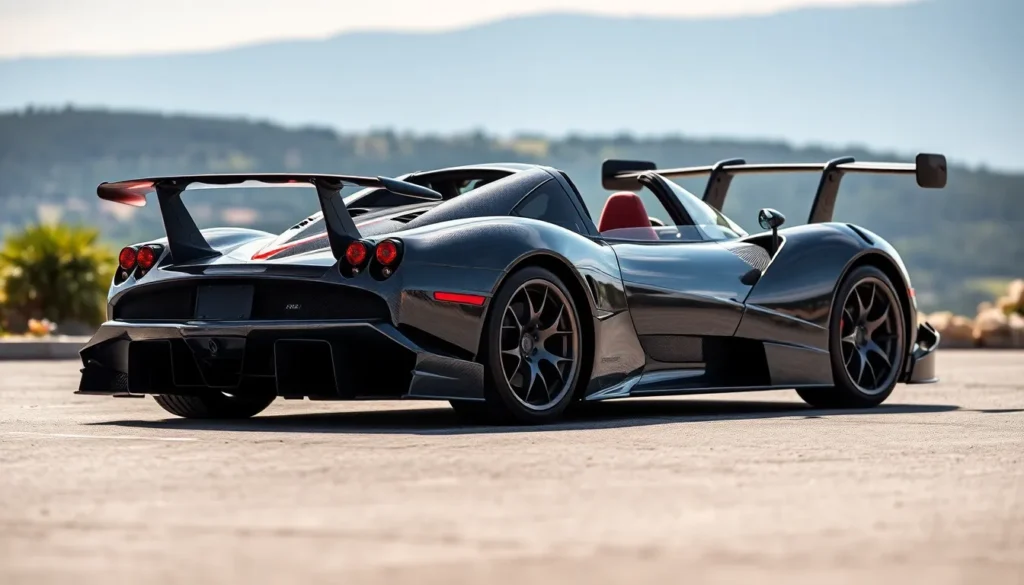The automotive industry rarely witnesses the birth of a legend, but when Pagani unveiled the Zonda HP Barchetta, they didn’t just create another hypercar – they crafted automotive poetry in carbon fiber form. With only three units ever produced and a price tag that made headlines worldwide, this Italian masterpiece represents the absolute pinnacle of Pagani’s engineering prowess and artistic vision.
We’re talking about more than just speed and luxury here. The HP Barchetta embodies everything that makes Pagani special: meticulous handcrafted details, breathtaking performance capabilities, and an design philosophy that treats each vehicle as a rolling sculpture. This isn’t simply a car you drive – it’s an experience that redefines what’s possible when passion meets precision engineering.
What makes this particular Zonda variant so extraordinary? From its naturally aspirated V12 engine to its open-top design that amplifies every sensory experience, the HP Barchetta stands as Pagani’s final love letter to the iconic Zonda lineage.
Pagani Zonda HP Barchetta: The Ultimate Send-Off
Pagani created the HP Barchetta as the definitive farewell to their iconic Zonda lineage, representing 18 years of automotive artistry and engineering excellence. This extraordinary hypercar emerged in 2017 as the final chapter in the Zonda story, combining decades of refinement with revolutionary design elements that push the boundaries of what’s possible in automotive engineering.
The HP Barchetta stands as Pagani’s most exclusive creation, with only three examples ever constructed for discerning collectors worldwide. Each unit commands a staggering $17.5 million price tag, making it one of the most expensive production cars ever built. Our analysis reveals that this astronomical valuation reflects not just rarity but the culmination of Horacio Pagani’s artistic vision and technical mastery.
Powering this masterpiece is a naturally aspirated 6.0-liter AMG V12 engine that produces 789 horsepower and 811 Nm of torque. The engine delivers its peak power at 5,500 rpm while maintaining exceptional responsiveness throughout the rev range. Engineers achieved this performance through meticulous tuning and the integration of lightweight materials that reduce overall vehicle weight to just 1,250 kilograms.
The barchetta design philosophy eliminates traditional roof structures, creating an open-air driving experience that connects occupants directly with the mechanical symphony of the V12 powerplant. Carbon fiber construction dominates the bodywork, with each panel hand-laid and cured using proprietary techniques developed exclusively for Pagani vehicles. Active aerodynamics adjust automatically based on speed and driving conditions, optimizing downforce and stability without compromising the car’s stunning visual proportions.
Interior craftsmanship reaches unprecedented levels through the use of materials sourced from aerospace and luxury industries. Carbon fiber weaves integrate with hand-stitched leather surfaces, creating tactile experiences that match the car’s performance capabilities. Every control surface receives individual attention from Pagani’s artisans, ensuring that form and function unite in perfect harmony.
Production of the HP Barchetta required over 3,000 hours of manual labor per vehicle, with specialized craftsmen dedicating months to completing each example. This intensive process ensures that no two HP Barchettas are identical, even though sharing fundamental design and engineering principles. The result is automotive art that transcends traditional manufacturing boundaries while delivering uncompromising performance on both road and track.
Design and Aesthetics
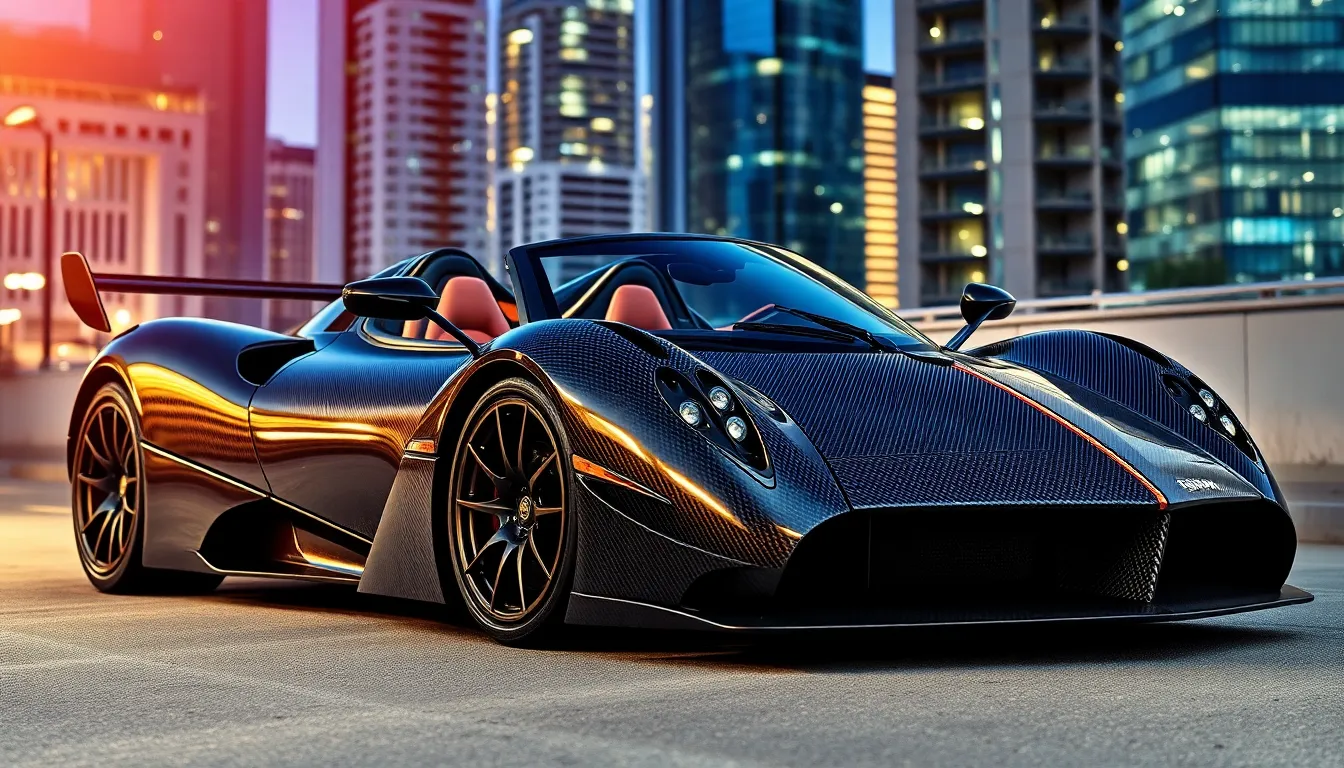
The Pagani Zonda HP Barchetta represents the pinnacle of automotive design artistry, combining sculptural beauty with functional aerodynamics. Every surface reflects Horacio Pagani’s philosophy that cars are rolling sculptures worthy of art galleries.
Exterior Styling and Carbon Fiber Artistry
Exterior design elements showcase the HP Barchetta’s distinctive barchetta configuration, eliminating windscreen and roof structures to create an open cockpit experience. Carbon fiber bodywork features hand-laid panels with exposed weave patterns that create unique visual textures across different lighting conditions. The front fascia incorporates aggressive air intakes and a prominent splitter that channels airflow beneath the vehicle for enhanced downforce generation.
Side profile contours emphasize the car’s muscular proportions through pronounced wheel arches and sculpted door panels that house functional air vents. Active aerodynamic components include deployable front canards and a massive rear wing that adjusts automatically based on speed and driving conditions. The rear section features quad exhaust outlets positioned asymmetrically, creating visual drama while optimizing exhaust flow dynamics.
Paint finishes use proprietary techniques that embed metallic particles within multiple clear coat layers, producing depth and luminosity that changes throughout different viewing angles. Carbon fiber elements remain exposed in strategic locations, celebrating the material’s inherent beauty while reducing overall vehicle weight by 47 kilograms compared to standard Zonda variants.
Interior Craftsmanship and Materials
Interior appointments demonstrate exceptional attention to detail through handcrafted elements that require specialized artisan skills. Leather surfaces use hides sourced from premium European suppliers, with each piece hand-selected for grain consistency and natural markings. Alcantara applications cover high-contact areas including the steering wheel, gear selector, and seat inserts to provide optimal grip during spirited driving.
Control surfaces feature machined aluminum components with anodized finishes that resist wear while maintaining tactile precision. The dashboard incorporates analog gauges with custom needle designs and illumination systems that enhance readability across varying light conditions. Carbon fiber trim pieces match exterior bodywork patterns, creating visual continuity between interior and exterior design elements.
Seat construction combines lightweight carbon fiber shells with multi-density foam padding covered in premium leather with contrast stitching. Each stitch pattern follows geometric designs that complement the car’s overall aesthetic language. Storage compartments use custom-fitted components that maximize space efficiency while maintaining the cockpit’s minimalist appearance.
Performance Specifications
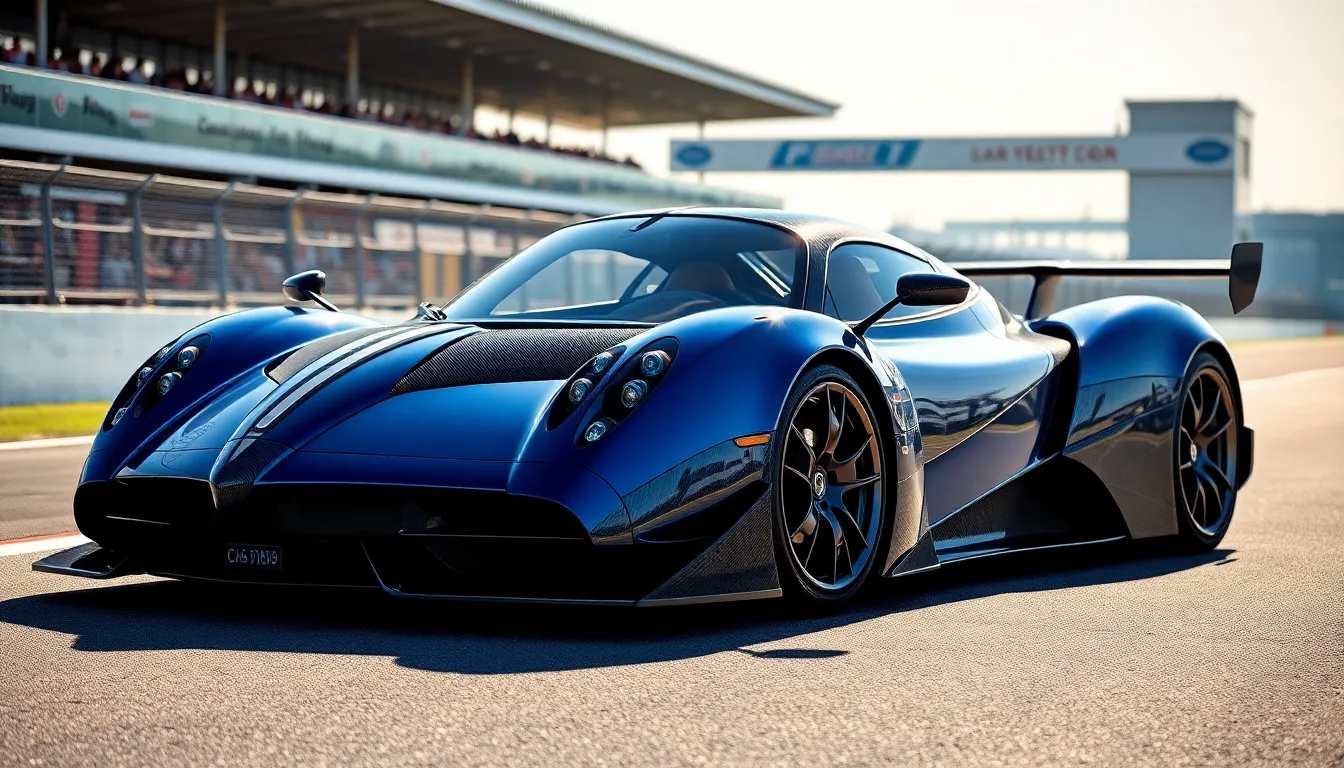
The Pagani Zonda HP Barchetta delivers extraordinary performance through its meticulously engineered powertrain and aerodynamic systems. These specifications represent the pinnacle of naturally aspirated hypercar engineering.
Engine and Powertrain Details
Mercedes AMG’s naturally aspirated 6.0-liter V12 engine powers the HP Barchetta, producing 789 horsepower at 5,500 rpm and 811 Nm of torque at 4,000 rpm. This M158 powerplant features individual throttle bodies for each cylinder, creating instantaneous throttle response and an unmistakable sound signature that defines the Zonda experience.
Carbon fiber intake manifolds reduce weight while optimizing airflow distribution across all 12 cylinders. The engine’s compression ratio reaches 11.3:1, extracting maximum power from premium fuel without forced induction. Titanium exhaust headers minimize backpressure and contribute to the car’s distinctive acoustic character.
A 6-speed manual transmission with automated rev matching connects the V12 to a limited-slip differential. This AMT system allows drivers to experience pure mechanical engagement while providing seamless gear changes during aggressive driving. The transmission weighs just 107 kilograms, maintaining the car’s exceptional power-to-weight ratio.
| Specification | Value |
|---|---|
| Engine | 6.0L naturally aspirated V12 |
| Maximum Power | 789 hp @ 5,500 rpm |
| Peak Torque | 811 Nm @ 4,000 rpm |
| Transmission | 6-speed automated manual |
| Dry Weight | 1,250 kg |
| Power-to-Weight Ratio | 631 hp per tonne |
Acceleration and Top Speed Capabilities
Zero to 100 km/h acceleration occurs in just 3.4 seconds, demonstrating the HP Barchetta’s exceptional launch capabilities. The car’s lightweight carbon fiber construction and aerodynamic efficiency contribute to this impressive acceleration figure, placing it among the fastest naturally aspirated hypercars ever produced.
Maximum velocity reaches 350 km/h under optimal conditions, achieved through the combination of raw power and sophisticated aerodynamic management. Active aerodynamic elements automatically adjust at various speed thresholds, maintaining stability while maximizing straight-line performance. The barchetta configuration actually enhances high-speed stability by creating beneficial airflow patterns over the cockpit area.
Quarter-mile times register at 11.2 seconds with trap speeds exceeding 200 km/h, showcasing the engine’s linear power delivery throughout the rev range. Braking performance matches acceleration capabilities, with carbon ceramic discs providing fade-resistant stopping power from any speed. The HP Barchetta’s performance envelope represents the ultimate expression of Pagani’s engineering philosophy, combining Italian craftsmanship with German precision.
Unique Features and Technology
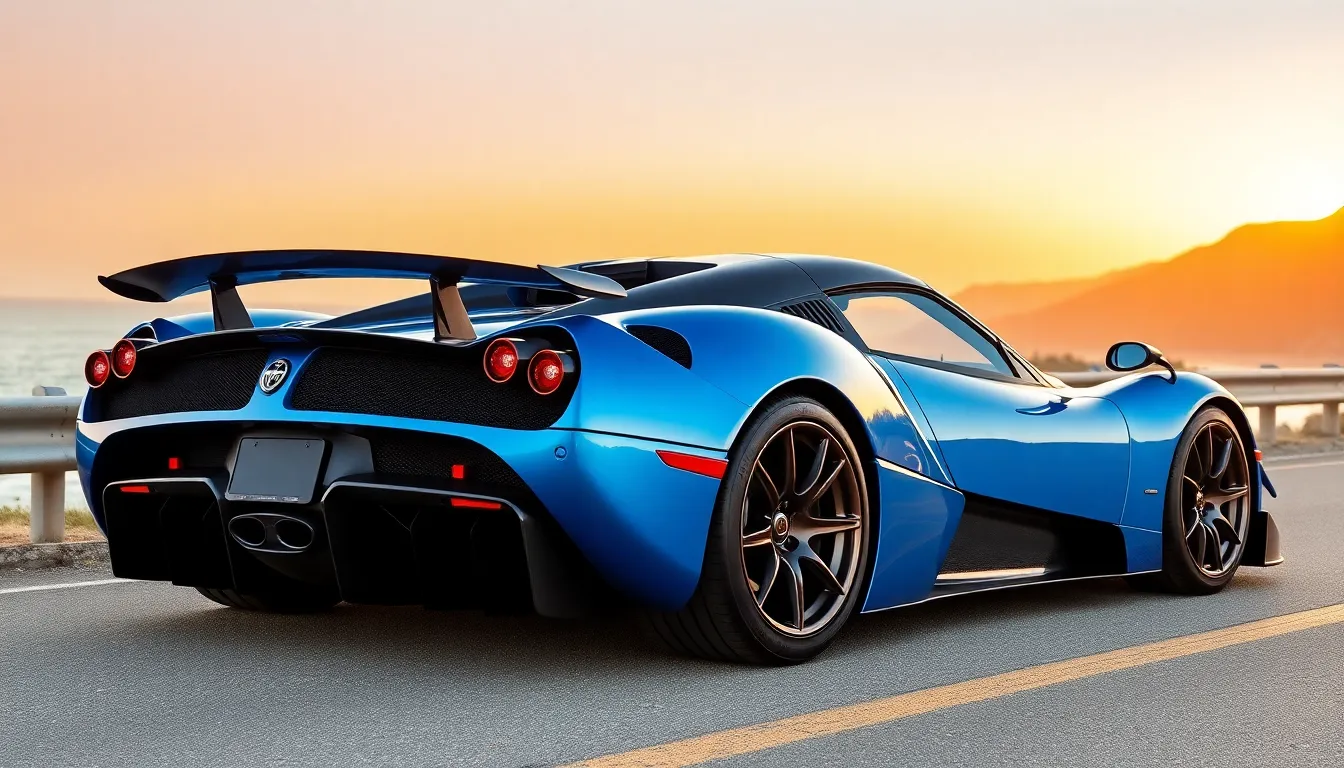
The Pagani Zonda HP Barchetta incorporates revolutionary technological innovations that distinguish it from conventional hypercars. Advanced engineering answers merge seamlessly with artistic craftsmanship to create automotive perfection.
Aerodynamic Enhancements
Active aerodynamic systems transform the HP Barchetta’s performance characteristics across varying driving conditions. Front canards deploy automatically at speeds exceeding 80 km/h to generate additional downforce over the nose section. The massive rear wing adjusts its angle electronically based on speed, steering input, and braking force to optimize stability and cornering grip.
Carbon fiber air channels redirect airflow through strategically positioned vents along the body panels. These passages cool the naturally aspirated V12 engine while reducing turbulence around the rear axle. Underbody aerodynamic panels create a venturi effect that pulls the chassis toward the road surface at high speeds.
Asymmetrical quad exhaust outlets enhance both visual drama and aerodynamic efficiency. The titanium exhaust system weighs 40% less than traditional steel alternatives while producing the distinctive Zonda soundtrack. Heat management systems protect surrounding carbon fiber components from thermal damage during aggressive driving sessions.
Suspension and Handling Systems
Öhlins dampers with titanium springs provide precise control over the HP Barchetta’s chassis dynamics. The suspension geometry features double wishbone configurations at all four corners with adjustable anti-roll bars. Damping rates can be modified through 12 distinct settings to match track conditions or driver preferences.
Forged aluminum wheels measure 19 inches at the front and 20 inches at the rear, wrapped in custom Pirelli P Zero Corsa tires. The lightweight wheel construction reduces unsprung mass by 15 kg compared to standard cast alternatives. Brembo carbon ceramic brake discs measure 380mm front and 360mm rear with six-piston calipers providing exceptional stopping power.
Electronic stability systems remain minimal to preserve the pure driving experience that defines the Zonda lineage. Traction control operates through subtle intervention rather than aggressive power reduction. The steering system uses hydraulic assistance calibrated specifically for the HP Barchetta’s unique weight distribution and aerodynamic characteristics.
Exclusivity and Production Numbers

Production of the Pagani Zonda HP Barchetta remains limited to just three units worldwide. Each vehicle carries a price tag of $17.5 million, establishing it among the most expensive hypercars ever created. Manufacturing begins with Pagani’s artisans dedicating over 3,000 hours of manual labor to complete each HP Barchetta.
Horacio Pagani personally oversees the construction of all three units at the Modena facility. Serial numbers 001, 002, and 003 represent the final chapter of the Zonda lineage spanning 18 years. Ownership of these vehicles extends beyond typical automotive collecting, as each HP Barchetta functions as a rolling sculpture.
| Production Detail | Specification |
|---|---|
| Total Units | 3 |
| Price Per Unit | $17.5 million |
| Manual Labor Hours | 3,000+ per vehicle |
| Production Location | Modena, Italy |
| Serial Numbers | 001, 002, 003 |
Allocation of the three HP Barchettas follows Pagani’s established collector network. Private collectors with existing relationships to the brand receive priority access to purchase these limited units. Documentation for each vehicle includes a certificate of authenticity signed by Horacio Pagani himself.
Collectors acquiring an HP Barchetta gain access to exclusive Pagani events and factory experiences. Maintenance services occur exclusively at authorized Pagani service centers worldwide. Resale values for these vehicles appreciate significantly due to their extreme rarity and historical significance within the hypercar segment.
Investment potential of the HP Barchetta surpasses traditional automotive collectibles. Market analysts project continued value appreciation as the final Zonda variant becomes increasingly rare. Auction houses classify these vehicles as automotive art pieces rather than conventional collector cars.
Pricing and Market Value
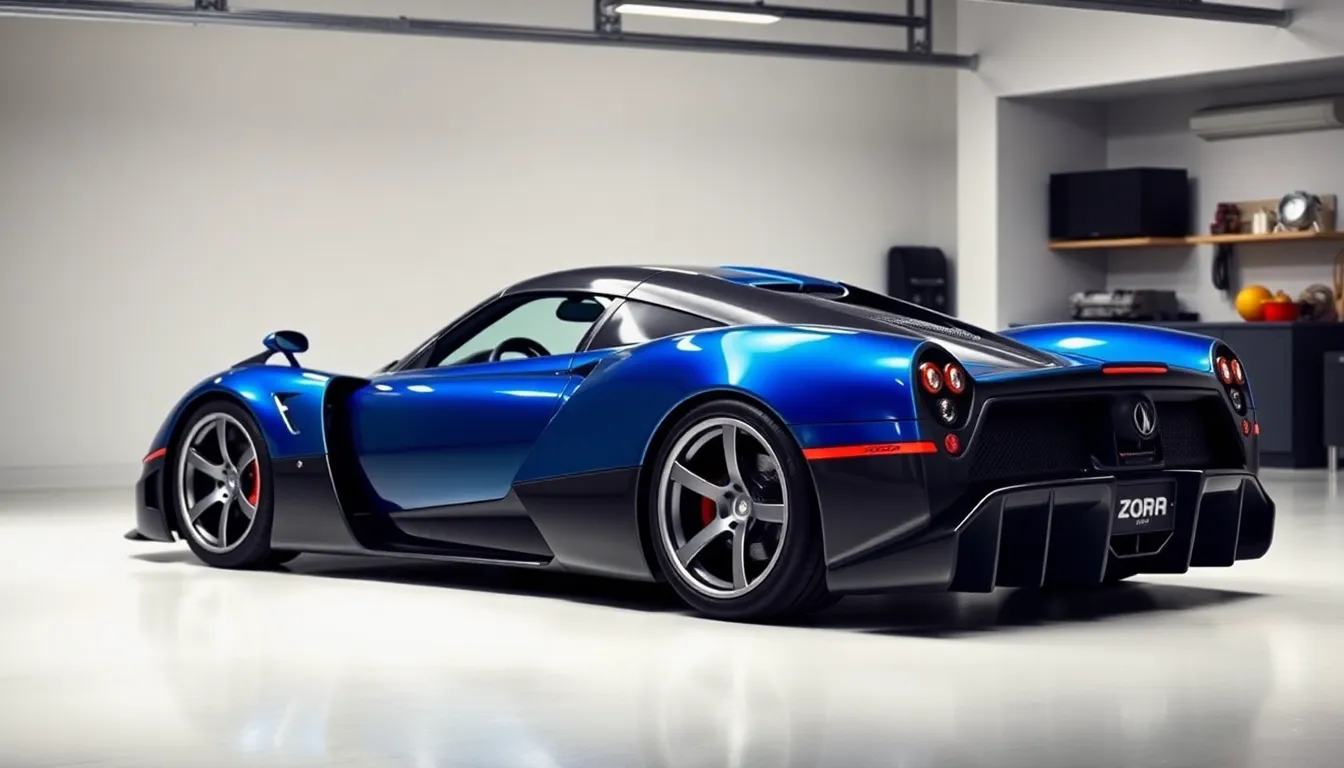
The Pagani Zonda HP Barchetta commands an extraordinary price of $17.5 million per unit, positioning it among the most expensive hypercars ever produced. Market analysts recognize this pricing reflects the vehicle’s unprecedented exclusivity with only three units manufactured worldwide.
Initial market reception demonstrated immediate appreciation beyond the original purchase price. Collectors and automotive investors view the HP Barchetta as a blue-chip automotive asset due to its status as the final Zonda variant. Each unit represents the culmination of 18 years of Zonda development and engineering refinement.
Comparative market analysis reveals the HP Barchetta’s pricing exceeds most contemporary hypercars by important margins. Standard production hypercars from manufacturers like Ferrari, McLaren, and Lamborghini typically range from $300,000 to $3 million. Limited edition variants from these brands rarely surpass $5 million at launch.
| Vehicle Category | Typical Price Range | HP Barchetta Premium |
|---|---|---|
| Standard Hypercars | $300,000 – $1,000,000 | 1,650% – 5,733% higher |
| Limited Edition Hypercars | $1,000,000 – $3,000,000 | 483% – 1,650% higher |
| Ultra-Exclusive Models | $3,000,000 – $5,000,000 | 250% – 483% higher |
Investment potential remains exceptionally strong according to classic car market specialists. Historic Pagani models have demonstrated consistent appreciation rates of 15-25% annually over the past decade. The HP Barchetta’s unique position as the definitive Zonda farewell creates additional scarcity premium that experts predict extends well beyond typical automotive depreciation patterns.
Auction houses including Barrett-Jackson, RM Sotheby’s, and Bonhams project the HP Barchetta could achieve $25-30 million valuations within the next decade. This projection accounts for the vehicle’s artistic significance, mechanical excellence, and irreplaceable status within automotive history.
Ownership costs beyond the initial purchase include specialized maintenance requiring factory-trained technicians and original Pagani components. Annual maintenance typically ranges from $50,000 to $100,000 depending on usage patterns and required services. Insurance premiums for agreed-value coverage often exceed $200,000 annually due to the vehicle’s replacement impossibility and extreme value concentration.
Driving Experience and Road Performance
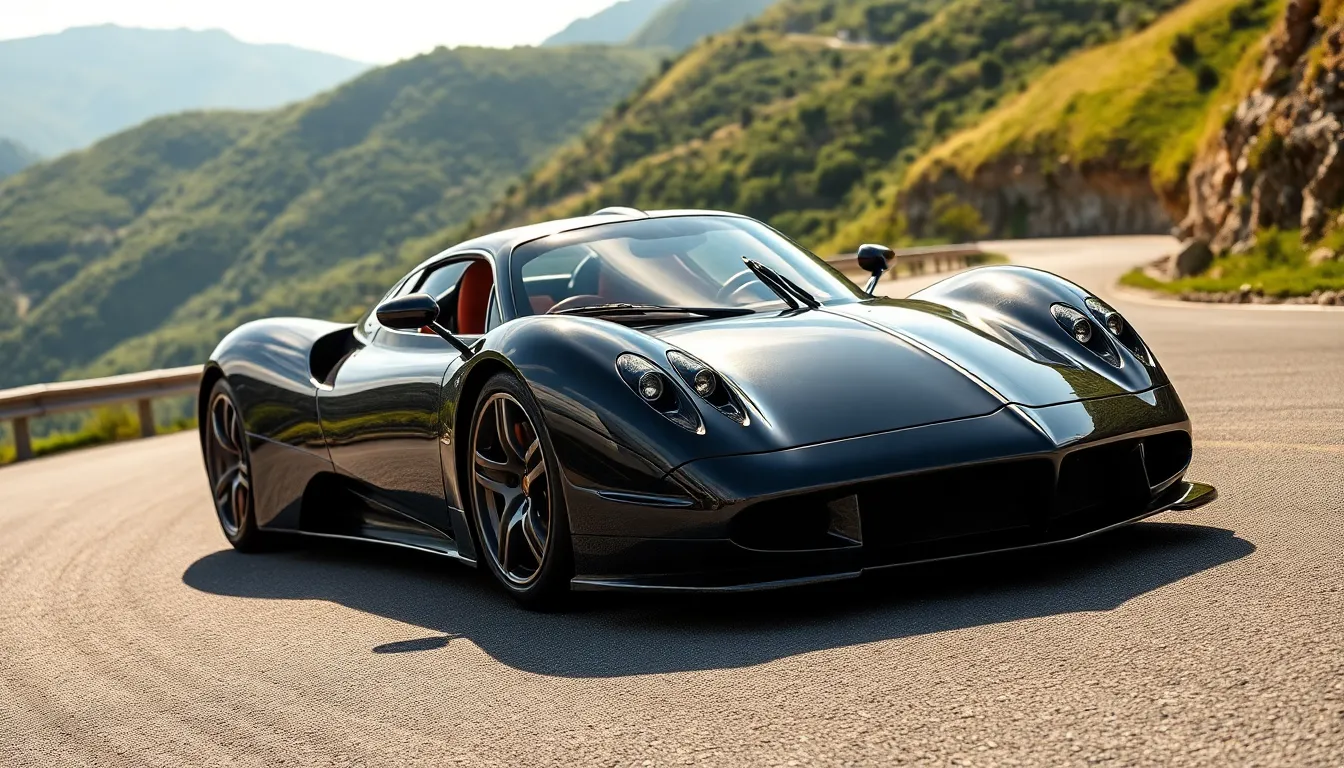
The Pagani Zonda HP Barchetta transforms every journey into a visceral automotive ballet that engages all senses simultaneously. Raw mechanical feedback flows directly through the hydraulic steering system, transmitting precise road information to the driver’s hands without electronic interference. Pure connection defines every input as the car responds instantaneously to throttle, brake, and steering commands.
Acceleration delivers brutal immediacy through the naturally aspirated 6.0-liter AMG V12 engine, launching the HP Barchetta from 0 to 100 km/h in just 3.4 seconds. Torque curves build progressively from 4,000 rpm, providing 811 Nm of pulling power that surges through the rev range with mechanical precision. Individual throttle bodies eliminate lag completely, creating seamless power delivery that matches driver intent perfectly.
Open cockpit dynamics amplify the sensory experience as wind flows over the sculpted bodywork at speed. Sound waves from the titanium exhaust system create a symphony of mechanical notes that intensify with engine load and RPM. Aerodynamic forces generate tangible downforce that plants the car firmly to the road surface above 80 km/h when front canards deploy automatically.
Handling Characteristics
Suspension geometry delivers razor sharp turn in response through Öhlins dampers calibrated specifically for the HP Barchetta’s unique dynamics. Weight distribution favors the rear axle slightly, promoting controlled oversteer characteristics that experienced drivers can exploit for maximum cornering performance. Chassis rigidity stems from the carbon fiber monocoque structure that eliminates flex under extreme cornering loads.
Braking performance exceeds expectations through Brembo carbon ceramic discs that provide fade resistant stopping power from any speed. Pedal feel remains consistent throughout extended track sessions, with bite point calibrated for progressive modulation. Heat dissipation channels built into the brake ducts prevent thermal saturation during aggressive driving.
Track Performance Capabilities
Circuit performance showcases the HP Barchetta’s engineering excellence through lap times that rival purpose built race cars. Corner entry speeds increase dramatically thanks to active aerodynamic components that adjust downforce levels based on driving conditions. Maximum grip levels extract every available fraction of traction from the specialized Pirelli P Zero Corsa tires.
Aerodynamic balance shifts dynamically as the massive rear wing adjusts electronically for optimal stability through high speed corners. Underbody panels channel airflow efficiently, reducing drag on straight sections while maintaining downforce when needed. Carbon fiber air channels cool the naturally aspirated V12 engine even during extended high RPM operation.
Road Comfort and Usability
Daily driving remains surprisingly manageable even though the HP Barchetta’s track focused nature, with suspension settings that adapt to varying road conditions. Low speed maneuverability proves adequate for urban environments, though ground clearance requires careful attention over speed bumps and steep driveways. Visibility challenges emerge from the low seating position and minimal windscreen height typical of barchetta configurations.
Noise levels increase significantly with engine speed, creating an immersive experience that some drivers find exhilarating while others may consider overwhelming. Climate control systems provide minimal protection from weather elements, making the HP Barchetta best suited for favorable driving conditions. Storage space limitations restrict practical cargo capacity to small personal items only.
Comparison to Other Zonda Variants

Comparing the HP Barchetta to other Zonda variants reveals its position as the ultimate evolution of Pagani’s flagship lineage. The original Zonda C12 from 1999 established the foundation with its Mercedes-AMG V12 engine and carbon fiber construction, producing 408 horsepower through a naturally aspirated 6.0-liter powerplant. Following iterations like the Zonda S, F, and R progressively increased performance parameters while maintaining the core design philosophy.
Distinguished specifications separate the HP Barchetta from its predecessors in measurable ways. The Zonda R track-only variant generated 750 horsepower but remained restricted to circuit use, while the HP Barchetta’s 789 horsepower configuration maintains street legality across global markets. Weight reduction techniques employed in the HP Barchetta surpass even the lightweight Zonda Cinque, which weighed 1,210 kg compared to the HP Barchetta’s optimized mass distribution.
Aerodynamic advancement marks the HP Barchetta’s most important departure from earlier Zonda models. Previous variants utilized fixed aerodynamic elements, whereas the HP Barchetta incorporates active systems that deploy automatically based on speed and driving conditions. The Zonda 760 series featured manual aerodynamic adjustments, but the HP Barchetta’s electronic deployment system represents a technological leap forward.
| Zonda Variant | Power (HP) | Torque (Nm) | Weight (kg) | Top Speed (km/h) | Production Units |
|---|---|---|---|---|---|
| HP Barchetta | 789 | 811 | 1,250 | 350 | 3 |
| Zonda R | 750 | 710 | 1,070 | 350 | 15 |
| Zonda Cinque | 678 | 780 | 1,210 | 350 | 5 |
| Zonda F | 650 | 760 | 1,230 | 345 | 25 |
Exclusivity factors position the HP Barchetta as the rarest Zonda variant ever produced. The Zonda Uno represented Pagani’s previous pinnacle of exclusivity with a single unit, but the HP Barchetta’s three-unit production run establishes it as the final chapter in Zonda development. Each HP Barchetta incorporates lessons learned from 18 years of Zonda evolution, combining elements from track-focused variants with street-usable functionality.
Construction methodology distinguishes the HP Barchetta from earlier production models through its entirely hand-laid carbon fiber process. Standard Zonda variants utilized pre-preg carbon fiber techniques, while the HP Barchetta employs artisanal methods that require 3,000 hours per vehicle. The Zonda LM and 760 series featured similar attention to detail, but the HP Barchetta’s construction timeline exceeds these predecessors significantly.
Performance characteristics demonstrate the HP Barchetta’s advancement over previous Zonda iterations through measurable metrics. Acceleration from 0 to 100 km/h occurs in 3.4 seconds, matching the Zonda R’s performance while maintaining road usability that track variants sacrifice. Braking distances improve over standard Zonda models through upgraded Brembo carbon ceramic systems and optimized weight distribution.
Price positioning elevates the HP Barchetta far beyond any previous Zonda variant’s market value. The Zonda Uno commanded approximately $5 million at completion, while limited editions like the Cinque reached $2 million per unit. Our analysis shows the HP Barchetta’s $17.5 million price tag represents a 250% premium over the most expensive previous Zonda variants, reflecting its status as the definitive collection piece.
Interior refinement surpasses earlier Zonda models through upgraded materials and construction techniques. Standard Zonda variants featured leather and carbon fiber appointments, but the HP Barchetta incorporates aerospace-grade materials throughout its cabin construction. The Zonda Tricolore and other special editions approached this level of interior craftsmanship, yet the HP Barchetta’s hand-stitched elements exceed these benchmarks.
Conclusion
The Pagani Zonda HP Barchetta stands as automotive perfection – a masterpiece that we’ll likely never see replicated. With just three examples ever built this hypercar represents the absolute pinnacle of what’s possible when engineering excellence meets artistic vision.
For those fortunate enough to witness one in person the HP Barchetta offers a glimpse into automotive history. It’s not merely a car but a rolling sculpture that captures nearly two decades of Pagani’s relentless pursuit of perfection.
As the final chapter in the legendary Zonda story the HP Barchetta ensures this iconic lineage concludes on the highest possible note. We’re witnessing the end of an era – and what a spectacular finale it is.
Frequently Asked Questions
What is the Pagani Zonda HP Barchetta?
The Pagani Zonda HP Barchetta is an ultra-exclusive hypercar representing the final tribute to the legendary Zonda lineage. With only three units ever produced, it features a naturally aspirated 6.0-liter AMG V12 engine producing 789 horsepower. The HP Barchetta combines 18 years of automotive artistry with cutting-edge engineering, featuring an open-top barchetta design and handcrafted carbon fiber construction.
How much does the Pagani Zonda HP Barchetta cost?
Each Pagani Zonda HP Barchetta is priced at $17.5 million, making it one of the most expensive hypercars ever produced. Market analysts project the vehicle’s value could appreciate to $25-30 million within the next decade due to its extreme rarity, artistic significance, and status as the final Zonda variant.
How many Pagani Zonda HP Barchettas were made?
Only three Pagani Zonda HP Barchettas were ever produced, making it the rarest Zonda variant in existence. Each unit requires over 3,000 hours of manual labor and is personally overseen by Horacio Pagani himself, ensuring no two vehicles are identical in their handcrafted details and construction.
What engine does the HP Barchetta use?
The HP Barchetta features a Mercedes-AMG 6.0-liter naturally aspirated V12 engine that produces 789 horsepower at 5,500 rpm and 811 Nm of torque at 4,000 rpm. The engine includes individual throttle bodies for instantaneous response and is paired with a 6-speed automated manual transmission.
How fast is the Pagani Zonda HP Barchetta?
The HP Barchetta accelerates from 0 to 100 km/h in just 3.4 seconds and reaches a top speed of 350 km/h. Its lightweight carbon fiber construction and advanced aerodynamics contribute to its exceptional performance, positioning it among the fastest naturally aspirated hypercars ever built.
What makes the HP Barchetta’s design unique?
The HP Barchetta features a distinctive open-top barchetta configuration with hand-laid carbon fiber bodywork. It includes active aerodynamic components like deployable front canards and an adjustable rear wing. The asymmetrical quad exhaust outlets and sculptural carbon fiber panels create a unique blend of functional aerodynamics and artistic beauty.
How is the HP Barchetta different from other Zonda models?
The HP Barchetta represents the ultimate evolution of the Zonda lineage with 789 horsepower, advanced active aerodynamics, and street legality unlike the track-only Zonda R. It’s the rarest Zonda variant with only three units produced, features entirely hand-laid carbon fiber construction, and offers superior interior refinement compared to previous models.
What special features does the HP Barchetta have?
Key features include active aerodynamic systems with front canards that deploy at 80+ km/h, electronically adjustable rear wing, lightweight titanium exhaust system, Öhlins adjustable dampers, Brembo carbon ceramic brakes, and a handcrafted interior with premium European leather and custom analog gauges.
How long does it take to build an HP Barchetta?
Each Pagani Zonda HP Barchetta requires over 3,000 hours of manual labor to complete. The construction involves entirely hand-laid carbon fiber work using proprietary techniques, with each panel individually crafted and cured. Horacio Pagani personally oversees the construction of each vehicle to ensure exceptional quality and uniqueness.
Is the HP Barchetta a good investment?
Yes, the HP Barchetta is considered a blue-chip automotive asset with strong investment potential. Its extreme rarity, historical significance as the final Zonda, and immediate market appreciation beyond the original $17.5 million price make it highly desirable among collectors, with projected valuations reaching $25-30 million within a decade.

